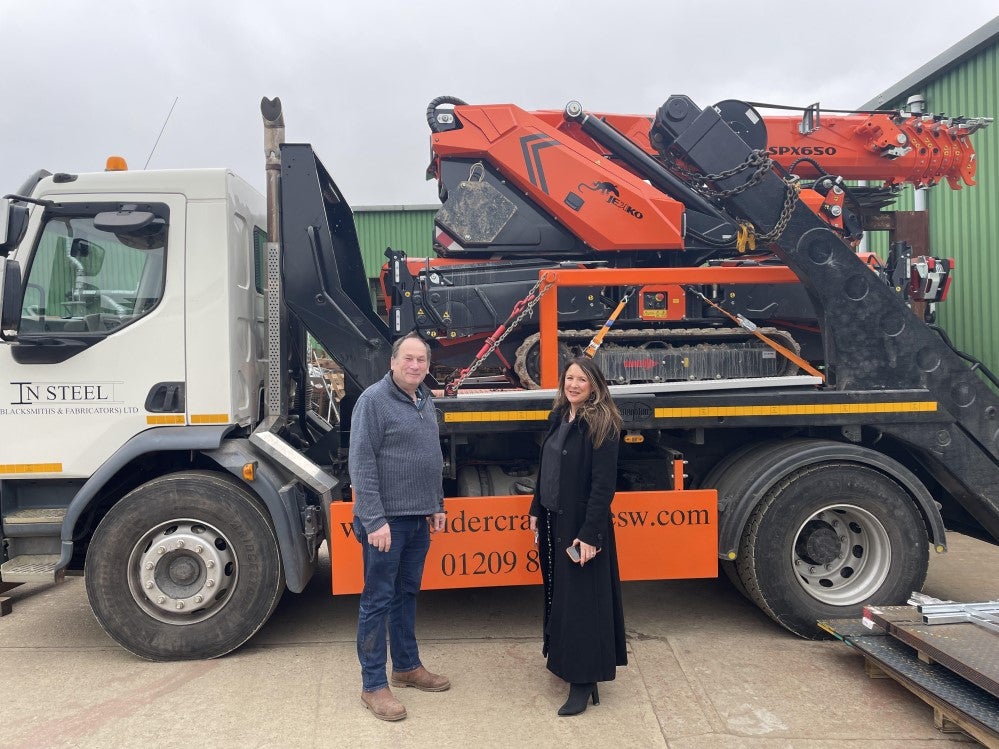
Large asset finance companies have become more complex than ever, as technology and market forces propel the industry. Christopher Marchant talks to leasing businesses to see how they approach operations and strategy in the leasing business.
Communication across divisions and levels of business can be crucial to leasing businesses performance. Wolfgang Pinner, chief operating officer, head of country coverage at BNP Paribas Leasing Solutions, understands how this need for integration links to a modern technology that has been more rapidly adopted by younger generations.
“It’s important that BNP Paribas taps into the knowledge of its staff, so we have created ‘jam’ sessions to gather the knowledge of our millennial and talents, and to work with agile models for IT programming,” he says.
Conversely, exclusive focus on digitisation would leave a section of BNP Paribas customers isolated. “Not every client-facing interaction can be done online yet, as adequate mobile coverage is not available across the whole country as it should be. But if this is not linked with internal processes then you create external work, you create brackets in terms of handling, and this makes it cumbersome,” Pinner notes.
Digitisation is also intrinsically linked to the relationship with the business and consumer. For Duncan Hullis, UK country manager at DLL, digitisation is a key opportunity to create optimum efficiency.
Hullis explains: “We are on a journey to improve many of our operational processes through digital enhancements. We have already made huge strides by launching partner mobile apps and integrating with our partners’ systems, both of which improve the way that information reaches our back office.”
How well do you really know your competitors?
Access the most comprehensive Company Profiles on the market, powered by GlobalData. Save hours of research. Gain competitive edge.

Thank you!
Your download email will arrive shortly
Not ready to buy yet? Download a free sample
We are confident about the unique quality of our Company Profiles. However, we want you to make the most beneficial decision for your business, so we offer a free sample that you can download by submitting the below form
By GlobalDataCraig Leyland, head of transformation at Lombard, sees these technological developments as revolutionising consumer expectation. He says: “How digitisation relates to the changing needs of our customers is important to Lombard. Customers are increasingly telling us that they want selfservice capability; they want us to be quicker and more efficient.”
Technological advancement also needs to be accessible across vendor, consumer, broker and business-to-business communication. A matching of back-office processes to customerfacing portals can be time-consuming and expensive, but it is also necessary for consumer-oriented asset finance businesses such as Lombard.
According to Leyland: ‘‘We’ve got to stop thinking outside the industry and start thinking outside in as an industry.’’
INTERNATIONAL STAGE
On the international stage, dealing with asset finance across time zones, languages and currencies can create additional layers of operational complexity. John Rees, chief commercial officer at Société Générale Equipment Finance (SGEF), says: “One of the biggest challenges we have is that we’re present in more than 20 countries, and there is a need to have consistent operations and systems.”
Rees continues: “For an example of the challenges, SocGen is mostly present in Europe, but we also have offices in Brazil and China, making it difficult to have one system covering all countries. “Interestingly, we work with some of our manufacturer relationships and vendors across those three geographies. Those manufacturers expect as much consistency as possible in the product offering, the operational support and the service levels across those three geographies.”
Hullis is able to see international operations from both sides, working in the UK for DLL, a company with more than €30bn (£26.6bn) in assets across more than 30 countries. “From a commercial point of view the advantages are that, as a global company, we can satisfy partners that want a global offering. These people wouldn’t necessarily talk to a UK-only-based company,” Hullis says.
“To give you a specific example, we’ve recently simplified the calculation for settlements; this solution was something that was generated in Europe. We were able to easily customise the process locally so that it satisfied the required method for regulated customers.”
International operations also magnify the need to understand and respond to changes in regulation. According to Pinner, “active challenges [at BNP Paribas] are regarding risk analysis and best practice, so we know we have to change in a very regulated and steered environment.”
He adds: “As part of IFRS [International Financial Reporting Standards] we had big changes. We had to know expected loss calculations for one year. There was some overall impact; it was a far more complicated project than we thought at the outset.”
It is clear that shifting consumer expectation relates closely to the international sphere and the challenges of a unified approach. There is a need for clarity and access that is essential to vendor relations across continents. Remaining at the core of risk assessment is the analysis of lessees and a likelihood of default.
Pinner says: “We always have our standard risk analysis; this has not changed over the years. It had to be augmented during the last year with the requisite anti-money laundering exercises. This is an extra element of assessing customer risk.”
Pinner also notes that, on an international level: “BNP Paribas has thousands of contracts each day across various operations managed throughout Europe. Our internal scorecards and decision-making models are based on that. The assets we finance are mission-critical for those companies, so this allows us to have a higher risk appetite because we own the assets thereby enabling us to satisfy those customer needs.”
RISK OVERSIGHT
Operations figures are continually overseeing the evolving methods of risk oversight. For Rees at SGEF, the factors of assessing lessees are intrinsically tied to individual consideration of the customer. He explains: “First factor: is it a repeat customer? Do we have an existing relationship and a payment track record? The second is: what is the business logic of their investment in the asset we’re financing? Third is, inevitably, their balance sheet and profitability.”
Increased oversight has also led to an ever-increasing attentiveness for Hullis at DLL. “Over the last few years we’ve focused on being smarter by increasing the amount of monitoring that we do – whether we are monitoring operational risks or reviewing customer or partner feedback,” he says. “Sometimes you just make a mistake and you learn from it, but other times you pick up a trend.
The reason for those mistakes could highlight a training requirement, but it could also be an opportunity to improve a process that is not as strong as it should be.” All operations figures interviewed are clear that financial reliability must be the primary factor when making these assessments.
In the words of Leyland at Lombard: “Customers need the ability to generate cash. This is very different from profitability. “Market forces are also integral. We spend a lot of time using models like portals, and press to look at what’s happening in the external environment to understand what risks there may be and how the business is going about mitigating those.”
Operational risk is not to be compromised for efficiency. Rees is clear on this point: “We see operational risk to be as important as credit risk or equipment risk or usage risk. All those risk factors – and operational risk is surely one of those – are always first in our thoughts.”
Lombard relates the element of risk to the actions of its employees. He says: “We’re really focused on what the most important thing is when it comes to handling risk, and that’s the culture of our people. Lombard spends an awful lot of time developing our people so they understand the importance of risk.”
The recognition of operations as a standalone entity is an area from which a number of asset finance companies are looking to move away. Hullis states that it is a mission at DLL to communicate as a networked organisation rather than as divided teams, adding: “We’re trying to integrate all the operations and commercial functions into one co-ordinated solution for our partners, to ensure that our partners and customers see us as one integrated point of contact.”
Integration is not limited to the assimilation of operations, but links to the connection of back-office channels. Pinner states: “I think they are totally integrated [at BNP Paribas]. You may have some back-office operations which are further away from sales, such as collection services, but they can still remain intertwined.
“In our 10 major European companies we have integrated a lot of those back-office services; this makes us more aware of our dayto-day operations, and ensures that the whole company thinks about sales.”
Integration across teams is as important as internal relations with vendor and sales channels. According to Leyland: “Operations is a broad set of capabilities, and if we put it out on the page it would look quite complicated, but actually the approach we take is really simple. Where we need one of those capabilities that is asset financespecific, such as asset management or pricing in relation to leases, then we have specialist line teams that work really closely to our relationship manager teams to make sure that we deliver fantastic experience and the right solutions for our customers.”
Rees defines the integrations as such: “We have vendors, we have direct sales, and our parent bank is a source of business for us. Our operational systems are geared up to those three distribution models, so the systems capture all the data.”
Technological advances can also link to increased efficiency and returns. Rees explains: “This all links to the connectivity of objects. If we’re going to offer someone a product based on the ‘per use’ cost, then we’ll have to see how many times they use the machine. “Therefore, we have to have connected objects that allow us to know if a printing press was used 100,000 times, for instance, or an x-ray machine was used for 20 procedures in a day in a hospital. Then we have to have systems that can calculate the customer rental based on those numbers of usages.”
Utilising this availability of data is also important to Lombard, as Leyland sets out: “Previously, Lombard completed credit underwrites and bureau searches to understand a customer’s probability of default. We now use some basic information that we hold about the customer or the customer shares with us, including more public data, and predictive analytics.”
The collapse of Carillion in the UK showed that factoring the rate of defaults into asset finance remains essential, even when they occur at record low levels across markets. Pinner outlines the process at BNP Paribas: “According to the business model, we have different anticipation of expected losses. We try to price it; we try to be transparent with our vendor partners about the risk we both want to take and to have a high penetration in sales. So this is something we monitor, plus measuring and calculating internal models quite extensively.”
Of the DLL position, Hullis explains: “We’re a vendor finance business, so the majority of the business we fund is introduced by partners. We’ve worked closely with most of these for a long time, so we have a really good understanding of the marketplaces that they operate in. “DLL applies risk costs in our annual budgeting process to each of those introducers. There is an analysis of what the likely risk cost from the introductions that they give us each year would be and then we’ll factor that in for the existing portfolio considerations.”
ADAPT AND CHANGE
The asset finance business is changing at a rapid pace, and each of the operations staff interviewed was aware of the need of their respective company to adapt accordingly. Changes in regulation have spurred changes in environment, especially when operating in an international setting.
In the words of Pinner, digitisation is “transforming performance”, as operations and processes undergo rapid – and sometimes difficult – changes in the name of improved customer relationships.
There is no one solution for any of the issues affecting these national and international organisations, though the overarching message prevalent throughout is the constant need to be aware of changes in the market, and that the need to identify risk as soon as possible is as crucial as ever.







